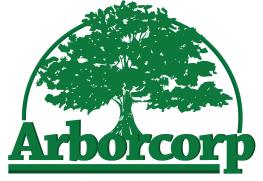Planting Trees and Shrubs: Your Guide
Why Plant Trees and Shrubs?
Trees and shrubs are essential components of a healthy ecosystem and vibrant landscape. They offer numerous benefits:
- Environmental Impact: Enhance biodiversity, improve air quality, and sequester carbon to mitigate climate change
- Soil Protection: Extensive root systems prevent erosion and maintain land integrity
- Urban Benefits: Create cooler spaces by reducing the heat island effect and decreasing energy consumption
- Mental Well-being: Studies show green spaces reduce stress, improve mood, and promote overall psychological health
- Community Value: Provide inviting areas for gatherings and encourage physical activity among residents
Best Time to Plant
Early fall is ideal for planting trees and shrubs because:
- Cooler temperatures reduce plant stress
- Soil remains warm enough to encourage root establishment
- Natural rainfall typically provides adequate moisture
- Plants can develop strong root systems while dormant aboveground, preparing them for robust spring growth
Selecting the Right Trees and Shrubs
Native Species Advantages
Native trees and shrubs offer significant benefits for your landscape:
- Better adaptation to local climate and soil conditions
- Greater resilience against pests and diseases
- Support for local wildlife and ecosystems
- Lower maintenance requirements once established
- Reduced water and fertilizer needs
- Minimal risk of becoming invasive species
When selecting plants, consider your specific site conditions including sun exposure, soil type, and moisture levels. Incorporating a diverse mix of species creates a more resilient landscape that can withstand changing environmental conditions.
Soil Assessment and Amendment
Proper soil preparation is crucial for successful planting:
- Conduct a soil test to determine pH level, nutrient content, and organic matter
- Adjust soil pH with lime or sulfur based on test results
- Incorporate organic matter like compost to improve soil structure and fertility
- Address drainage issues with appropriate amendments for clay or sandy soils
- Match plants to soil conditions or amend soil to suit chosen species
Preparing the Planting Site
Location Factors
Choose the optimal planting location by considering:
- Sunlight exposure: Most trees require full or partial sun to thrive
- Spacing requirements: Ensure adequate room for mature growth both above and below ground
- Proximity to structures: Avoid potential conflicts with buildings, utilities, and other vegetation
- Water availability: Ensure access to sufficient moisture, especially during establishment
- Drainage patterns: Prevent waterlogging by avoiding low spots that collect excess water
Post-Planting Care
Watering Guidelines
Proper watering is critical for newly planted trees and shrubs:
- Water thoroughly around the root zone until soil is moist but not soggy
- Repeat watering 2-3 times weekly during the first few weeks
- Check soil moisture by inserting your finger about an inch into the soil
- Consider using soaker hoses or drip irrigation for consistent moisture
- Apply a 2-3 inch layer of organic mulch to retain moisture and regulate soil temperature, keeping it several inches away from the trunk
Additional Maintenance Tips
- Ensure trees remain straight as they establish
- Prune only damaged or crossing branches initially
- For balled or container plants, ensure roots are properly spread when planting
- Avoid compacting soil around new plantings
- Adjust watering based on plant size and weather conditions
Expert Tree Care Services
Ready to enhance your property with beautiful, healthy trees and shrubs? Arborcorp Tree Experts provides professional planting and care services that ensure your landscape thrives for years to come.
Contact Us Today
Arborcorp Tree Experts
Your partners in creating a healthier, greener landscape
Phone: (905) 827-9103
Email: info@arborcorp.ca
Schedule your on-site consultation nowand transform your outdoor space with expert tree and shrub planting services tailored to your property's unique needs.






